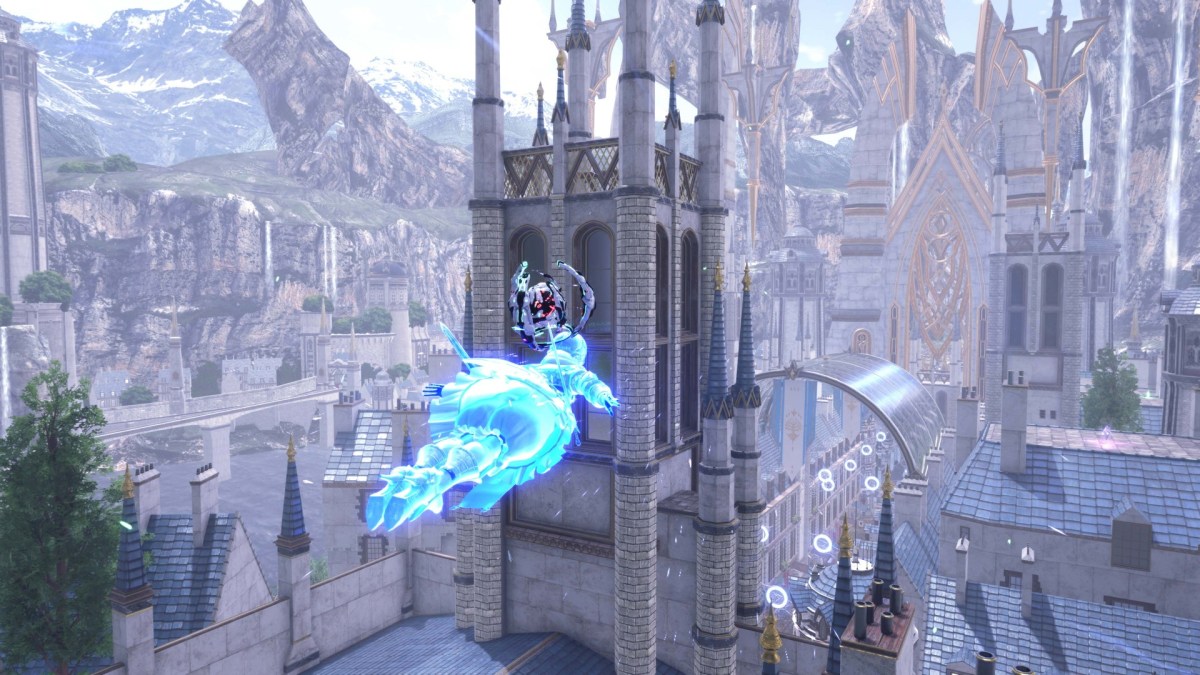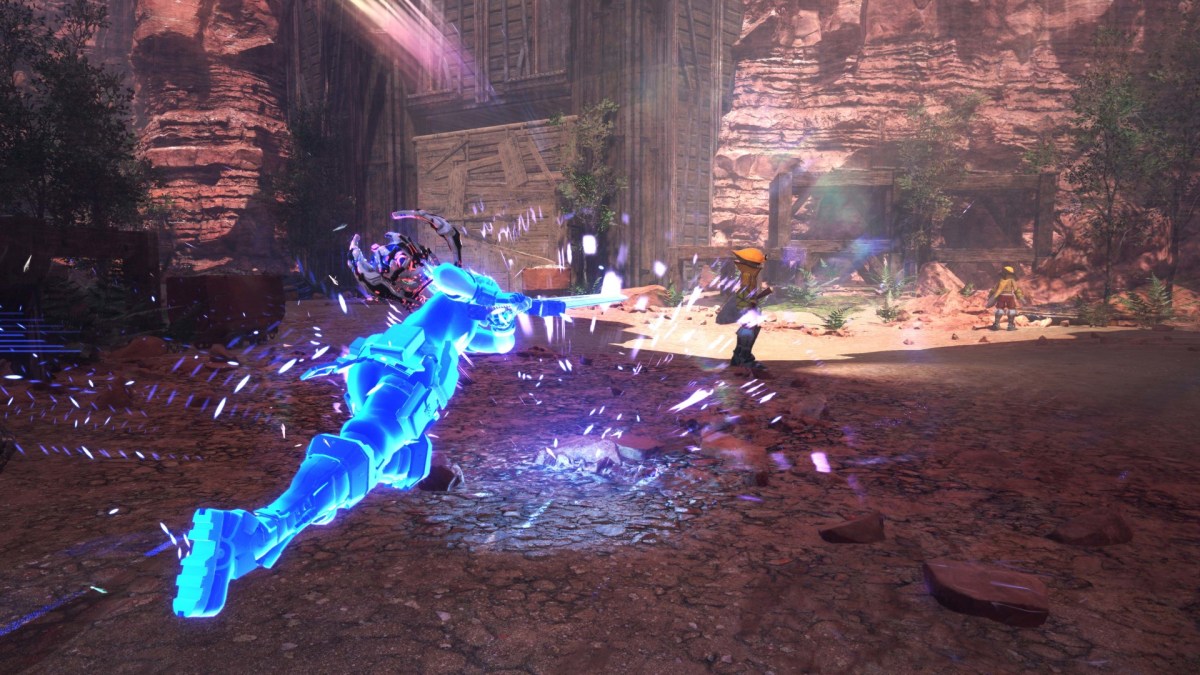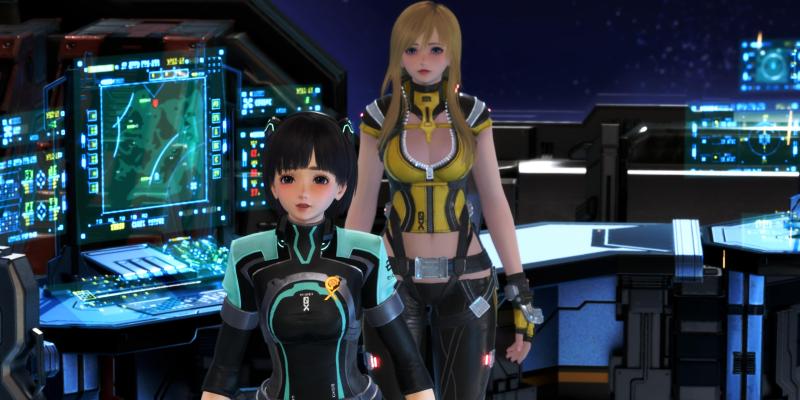Persona 5, Dragon Quest XI, Shin Megami Tensei V, and Xenoblade Chronicles 3 all have a couple things in common: They’re fantastic JRPGs, and they’re huge. With the exception of SMTV, you’re looking at potentially more than a hundred hours to complete each game, unless you just start skipping sidequests and/or nonessential cinematics. This sense of “hugeness,” whether in terms of literal physical environments or general game scope, feels like a trend in mainstream 3D JRPGs. So I find it refreshing how Star Ocean: The Divine Force from tri-Ace and Square Enix is committed to just being small, in almost every sense.
The Divine Force is a quirky game top to bottom, and its design decisions definitely don’t always work in the game’s favor. However, one thing you can’t accuse the game of being is bloated. The game is essentially designed to be played twice, since there are two protagonists to choose between who witness and participate in slightly different events in the game’s story. It’s still mostly the same experience but just different enough to be intriguing, and it’s likely the reason you can blaze through The Divine Force in 30-35 hours if you want.
It used to be that most JRPGs could be finished in 15-40 hours, though of course that length could balloon if you just loved exploring a game’s world, such as with Final Fantasy VI. Part of the reason why games were shorter was just that “cinematics” as we think of them now didn’t exist yet. All the storytelling occurred with 2D sprites with a limited range of animation, and there was no such thing as selecting dramatic camera angles and watching characters emote meticulously. That meant even a story-dense game like Final Fantasy VI moved along at a brisk place, since the same quick “bug-eyed” or “lowered head” animation was enough to convey a mood in dozens of different situations.

With the advent of the 32-bit consoles and the prominence of 3D graphics, JRPGs gradually became larger. Final Fantasy VII was an epic that fully embraced film sensibilities and to exceptional effect, and the game was also just packed with content in general. It got larger in story richness and gameplay content both. Nonetheless, a first-timer can complete the game with most side content done in 50-70 hours. Around this time, the expectation shifted to be that an RPG can be finished in roughly 40-70 hours, and this expectation stuck for arguably more than a decade. There were outliers like Xenogears and Dragon Warrior VII that existed at the extremes of story density and game content density respectively, and that could push their length beyond 70 hours easily. But it wasn’t extremely common.
Fast-forward to the present though, and you’ll find that many of the major JRPGs released by established publishers are huge. It’s tempting to say it’s all because of the open-world phenomenon, and indeed, there continue to be too many-open world games that fill their open worlds with nothing very interesting. But Dragon Quest XI is less of an open-world game than the original Dragon Warrior on NES in 1989, and none of the Persona games are open-world. These are simply games that have taken the Final Fantasy VII ethos to its furthest reaches: more story, more gameplay, until the adventure literally could not become more epic within the hardware limitations.
This is not a bad thing. Huge JRPGs have their place. I love every huge game I have referenced so far (though Dragon Warrior VII is way, way too long). And if people want to play smaller, satisfying, bite-sized JRPG experiences, they continue to exist in abundance in the indie scene. (There is also, incidentally, the glorious Live A Live remake.) However, when it comes to mainstream 3D JRPGs from major publishers — and frankly, it seems like there are fewer of them in general than there used to be — it feels like “go big or go home” is the typical mantra.

Star Ocean: The Divine Force isn’t like that, for better and for worse. There is an abundance of cinematics, and in all honesty they’re rather mundane for the first third of the game. And amusingly, there are a couple scenes involving armies that feel like they were supposed to be much grander than they are, but owing to budget or technical constraints, the game only ever shows a handful of soldiers at a time. The game cuts corners like this on a few different instances, but it also owns these decisions. This is a backhanded compliment, but tri-Ace sometimes feels like a bunch of kids doing their best to put on a play with the stuff they had in their basement. It’s sincere and delightful in spite of the sloppiness. And the story really does pick up later on.
But the “smallness” of Star Ocean: The Divine Force doesn’t just come down to the developer doing sloppy work. A lot of the smallness is also purposeful and thoughtfully executed. This comes across chiefly in the environmental designs. All of the areas in the game are discrete, disconnected spaces designed with specific ideas in mind. And most areas of The Divine Force are designed specifically around the game’s “D.U.M.A.” mechanic, which, among other things, lets you boost through the air for a few seconds.

This aerial boost lets you easily reach areas that would normally be inaccessible in other video games, such as rooftops or little floating islands. (Why the islands float is, of course, a mystery.) Boosting around environments to find hidden power-ups and items frankly doesn’t get old, whether in towns or across the wildernesses that connect the different areas. It’s fun both for its own sake and because tri-Ace knows not to make these areas needlessly bloated. Most of the wilderness areas of the game can be thoroughly combed for hidden items within half an hour at maximum, which feels like a revelation after spending dozens of hours looking through every nook and cranny of Xenoblade Chronicles 3.
Again, Star Ocean: The Divine Force is far from perfect. (Check out our final review.) But in ways both intended and unintended, it offers a glimpse of how major publishers can get back to releasing mainstream 3D JRPGs that are proudly small instead of striving for huge. It’s possible to create games that have fun mechanics and compelling story ideas and just use them really well in finite, controlled spaces, as opposed to trying to expand and expand on them across 80+ hours.
Huge JRPGs are good. Small JRPGs are good too. It would be nice not to have to depend on indie developers for more of the latter.
